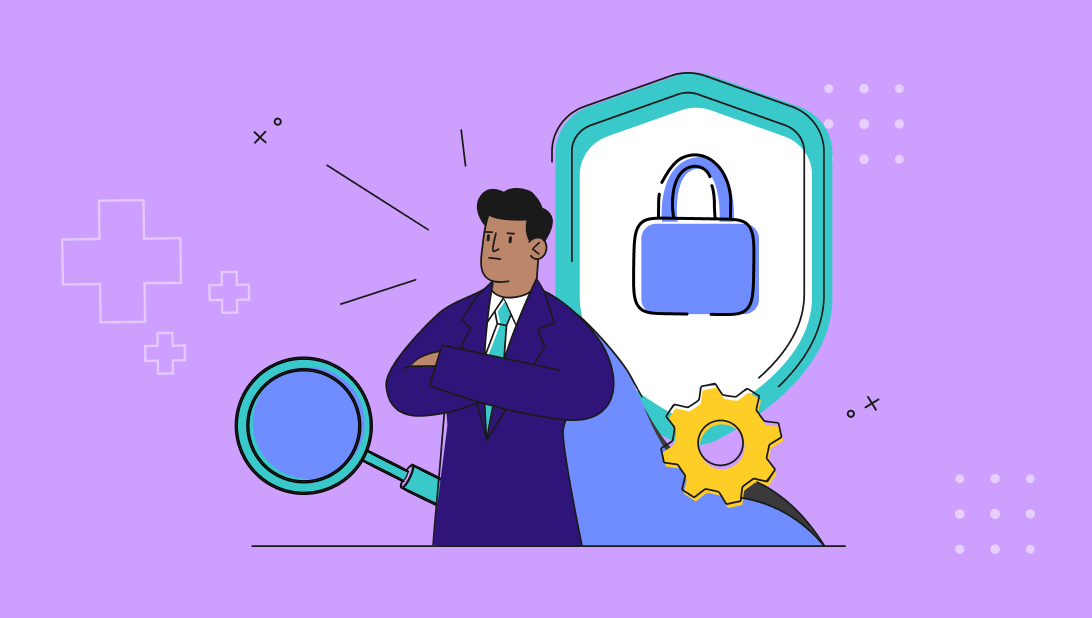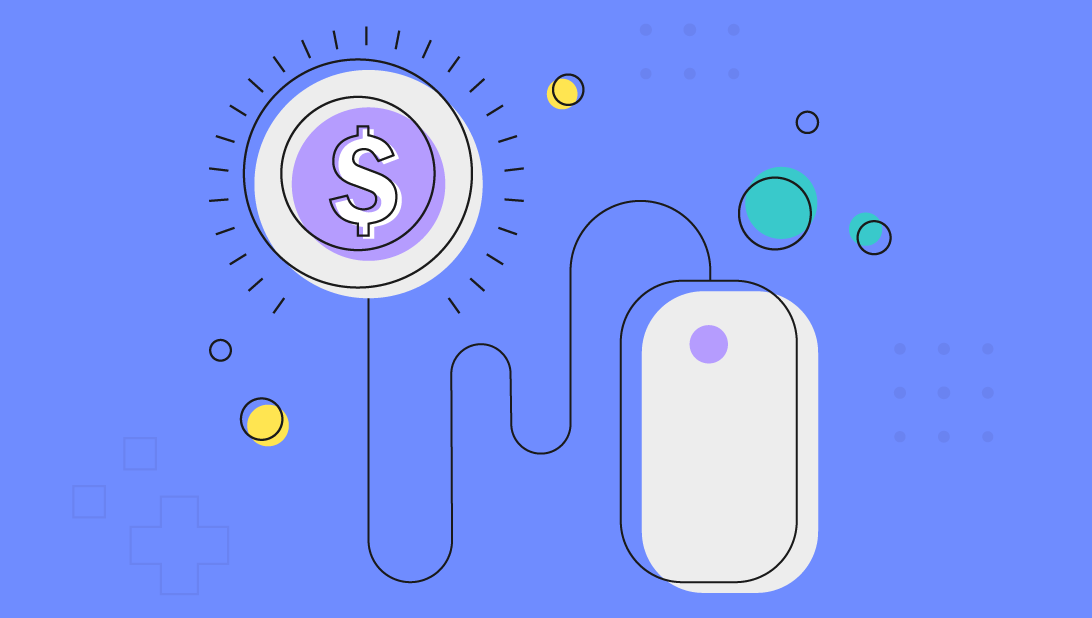



The B2B SaaS market in 2025 isn’t just crowded — it’s chaotic. With hundreds of vendors vying for attention, tech buyers are overwhelmed with options.
Meanwhile, increasingly long B2B sales cycles, complex B2B buying committees, AI-saturated content feeds, and rising expectations (e.g., a hyper-personalized customer experience) mean traditional marketing playbooks no longer cut it. Companies need a new approach to B2B SaaS marketing.
Clever campaigns and flashy technologies have their place, but they aren’t nearly enough to help you achieve sustainable and long-term success. You need a solid foundation built on clear market positioning, strategic alignment across teams, and a deep understanding of your buyers and their needs.
Let’s explore how B2B SaaS marketing is unique in today’s business environment, the key challenges you may face, and how to craft a winning strategy to navigate the fast-evolving B2B marketplace.
The subscription model means B2B SaaS marketing must go beyond generating demand to sustaining value across the customer lifecycle. While the concept isn’t new, marketers must adapt to fast-moving innovation, intensifying competition, and increasingly discerning buyers:
The B2B sales cycle is lengthy. You must build relationships with prospects to stay top-of-mind. An always-on approach to B2B SaaS marketing helps you engage your target audience year-round, regardless of specific campaigns or events, to foster trust and maintain a continuous presence.
With low barriers to entry and a flood of VC-backed players, the SaaS market is saturated with lookalike competitors. To differentiate your brand, you must go beyond features to establish brand positioning and thought leadership while delivering a compelling story to demonstrate why your solution is your audience’s best option.
More companies now combine product-led growth (PLG) with traditional sales-led strategies, and marketing teams must support both self-service and high-touch journeys to drive signups and close complex deals. Therefore, your messaging must address individual and enterprise buyers.
According to Gartner, the average B2B buying committee has 11 members. Each stakeholder has competing priorities (e.g., security, scalability, ROI, and user adoption). Your B2B SaaS marketing campaigns must resonate with various audiences, from technical users to business leaders, and empower them to be your internal champions to promote your solution to their colleagues.
B2B buyers expect intuitive, personalized experiences. These include intelligent chatbots, dynamic content, and seamless journeys across channels. Decision-makers also use AI tools to help them research solutions, analyze options, and validate claims — B2B marketers must adapt to new behaviors.
AI-generated content has created a sea of sameness where derivative blog articles, templated LinkedIn posts, and shallow listicles flood the internet, causing audiences to tune out. Your B2B SaaS marketing strategy must double down on originality, authenticity, and unique insights rooted in real-world customer stories and expert POVs.
Many SaaS companies are saying more of the same in their marketing materials. Claims like “Scalable!”, “AI-powered!”, and “Intuitive!” are a dime a dozen. Generic value propositions no longer carry weight, and brands must show buyers why their solutions are unique, relevant, and trustworthy.
Meanwhile, marketers are inundated with data. Yet, they're unable to make decisions because of analysis paralysis. Teams struggle to track attribution across channels, prove ROI to leadership, and identify what messages resonate to turn data insights into impactful actions to capture opportunities and boost performance.
Additionally, increasingly stringent privacy laws and scrutiny around data usage put traditional targeting and attribution models under pressure. Tracking users across platforms or attributing opportunities to specific touchpoints has become more challenging. As such, B2B marketers must rethink their measurement strategies.
Marketing personalization is another essential B2B SaaS marketing component. However, surface-level personalization (e.g., "Hi [first name]) and segmentation no longer impress modern buyers. B2B marketers must deliver contextually relevant content based on behavior, industry, lifecycle stage, and role through deep audience insights, flexible content systems, and the right mix of automation and human oversight.
Moreover, traditional lead-generation tactics like gated PDFs and webinar follow-ups don’t guarantee high-quality MQLs. Instead, marketers must support these assets with an intent-based, conversation-driven approach to demand generation — exploring new ways to identify quality leads and build relationships.
The good news is that you don’t need the biggest budgets to win the B2B SaaS marketing game. The key to success is a strong foundation that puts strategy over bright, shiny objectives and values clarity over complexity while blending advanced technologies with a human touch. Here are key steps to set the stage for success:
As mentioned above, parroting generic value propositions no longer works in today’s saturated market. Instead, you must be crystal-clear about the problem you solve, why your solution is different, and why it matters now. Additionally, you should establish a memorable and resonating brand identity to reinforce emotional connections.
Develop a brand narrative to communicate your value and a compelling point of view (POV) that aligns with your buyers’ worldview. A strong brand positioning gives prospects the confidence to buy from you and appeals to them emotionally to boost customer retention and advocacy.
Buyers research across channels, revisit competitors, and consult internal teams often simultaneously while sometimes retracing previous steps. Marketers must address the non-linear B2B sales cycle from different perspectives as decision-makers evaluate a solution from various angles.
Use POV-driven blogs, podcast appearances, and LinkedIn thought leadership content to establish brand awareness and credibility for top-of-funnel audiences. Facilitate the customer journey with mid-funnel content like buyer’s guides, comparison pages, and case studies. Also, provide ROI calculators and technical deep dives to support sales efforts and seal the deal.
AI helps marketers make sense of the large volume of data they collect from various touchpoints. AI-powered marketing platforms are critical for automating workflows, optimizing tactics, and implementing hyper-personalization at scale. However, you must be selective when using AI to improve efficiency.
AI technologies can’t replace human creativity, empathy, or brand voice. Marketers must keep the human touch for strategy, storytelling, and relationship-building to ensure their brand personality stays grounded in a real-world understanding of the audience and their sentiments to remain relevant.
Today’s B2B SaaS marketing strategies must combine inbound, outbound, and partner-driven approaches to drive growth (i.e., don’t put all your eggs in one basket) and adapt to the complex B2B sales cycle. You must establish a multi-touch and multi-channel approach to meet your audience where they are.
Your customer acquisition strategy should include organic SEO, online ads, B2B influencer campaigns, sponsorships, partnership ecosystems, co-marketing, thought leadership, public relations, and community-led growth. You must also adopt an attribution model to track data across channels for in-depth insights.
As privacy regulations evolve and buyers become more protective of their information, the days of passive data collection and aggressive retargeting are over. Brands must design relevant and respectful personalization experiences based on explicit user consent and value exchange to foster trust and protect their reputations.
Collect zero-party data through preference centers, interactive content, and onboarding flows. Also, gather first-party data via website visits, purchases, or app usage. Communicate how you’ll use the information to improve the user experience and implement personalization technology thoughtfully to deliver value.
B2B SaaS marketing is changing fast. Brands that fail to keep up with the latest buyer preferences, go beyond generic positioning to build a memorable brand presence, and leverage new marketing technologies strategically to deliver an outstanding customer experience will risk falling behind their competitors.
Yet, chasing bright, shiny objects is rarely the answer to long-term success. Instead, you must blend an in-depth understanding of the market environment with a strategy-first approach to B2B SaaS marketing to meet your prospects where they are and guide them through the marketing funnel to accelerate your pipeline.
At Spot On, we implement a holistic approach to B2B SaaS marketing to build a solid foundation, leverage various channels to reach target audiences, and implement data analytics to inform meaningful action. Schedule a meeting to see how we can help you stay relevant in today's competitive market.


Rebecca Graves co-founded Spot On in 2012. As a partner and leader of client services, she takes immense pride in being in charge of “client happiness.” The role allows her to wield her problem-solving skills while fostering big-picture perspectives and team building. Rebecca’s more than 35 years of experience have equipped her to translate strategic planning expertise for the advancement of tech companies transforming the healthcare, financial, and legal industries.
Get the latest and greatest posts sent straight to your inbox.


